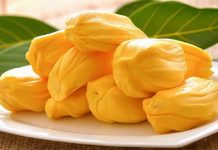Family: Cucurbitaceae
Synonym:Cucurbita acutangula (L.) Blume
Bengali/Vernacular name: Jhinga, Ghosalata, Jinga (Bengali); Jhiya (Noakhali).
Tribal name: Jhing-a (Chakma), Chebokci (Chak), Beyoi (Khumi), Umpawng (Lushai), Khota-shi (Marma), Pang lai (Murang), Archongchem (Pangkhoa), Kha-ui-bawn (Rakhaing), Jhiya (Tanchangya).
English name: Ridged gourd, Angled loofah.
Description of the plant: A large climber, stem 5-angled, with usually 3-fid tendrils. Leaves subcircular, often 5-7 lobed, heart shaped at the base. Flowers yellow, large; male flowers in axillary 12-20 flowered racemes; female flowers solitary. Fruit 20-30 cm long, clavate-oblong, acutely 10-angled, tapering towards the base.
Plant parts used: Leaf, fruit, seed, root.
Herbal uses:Powder made from the dried fruits of the plant is taken twice a day (5 g amount each time) with water until the jaundice is cured.
An extract made from the fruits of the plant is taken thrice a day (50 ml amount each time) for three days to treat headache.
Decoction made with the leavesof the plant is used to treat amenorrhoea.
Pounded leaves areused for the treatment ofhaemorrhoids, splenitis, andleprosy.
Juice extracted from the leaves of the plant is used externally for sores and various animal bitestreatment.
Root decoction is used to treat dropsy.
Seedsof the plant are eaten to expel intestinal worms.
Leaf juice is used for the treatment ofconjunctivitis in children.
A fresh juice extracted from the leaves of the plant is applied to treat eczema.
Powder made from the fruits of the plant is taken twice a day (3 g amount each time) with water until the piles is cured.
Distribution: The species is cultivated throughout the country.
Is this plant misidentified? If yes, please tell us….














